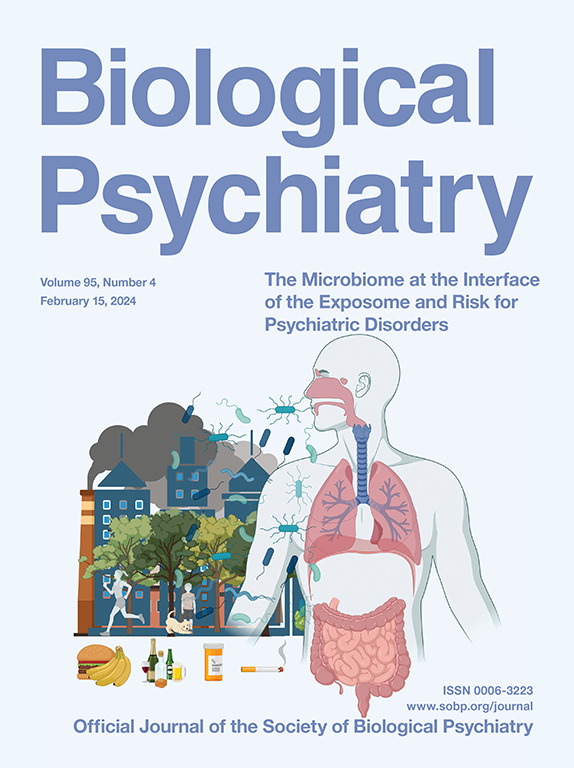小脑和腹侧被盖区之间的纵向和可重复的抗共激活模式与精神分裂症的冷漠有关
IF 9.6
1区 医学
Q1 NEUROSCIENCES
引用次数: 0
摘要
精神分裂症的阴性症状缺乏有效的治疗。奖赏系统和小脑的异常与这些症状有关。小脑通过腹侧被盖区(VTA)调节奖赏回路。“认知障碍理论”认为精神分裂症患者小脑抑制减少可能是纹状体高多巴胺能症的基础。然而,小脑- vta连通性在阴性症状中的作用尚不清楚。本文章由计算机程序翻译,如有差异,请以英文原文为准。
A Longitudinal and Reproducible Anti-coactivation Pattern Between the Cerebellum and the Ventral Tegmental Area Relates to Apathy in Schizophrenia
Negative symptoms of schizophrenia lack effective treatments. Anomalies in the reward system and cerebellum have been linked to these symptoms. The cerebellum modulates reward circuitry via the ventral tegmental area (VTA). The "cognitive dysmetria theory" posits that reduced cerebellar inhibition in schizophrenia may underlie striatal hyperdopaminergia. However, the role of cerebellum-VTA connectivity in negative symptoms remains unclear.
求助全文
通过发布文献求助,成功后即可免费获取论文全文。
去求助
来源期刊

Biological Psychiatry
医学-精神病学
CiteScore
18.80
自引率
2.80%
发文量
1398
审稿时长
33 days
期刊介绍:
Biological Psychiatry is an official journal of the Society of Biological Psychiatry and was established in 1969. It is the first journal in the Biological Psychiatry family, which also includes Biological Psychiatry: Cognitive Neuroscience and Neuroimaging and Biological Psychiatry: Global Open Science. The Society's main goal is to promote excellence in scientific research and education in the fields related to the nature, causes, mechanisms, and treatments of disorders pertaining to thought, emotion, and behavior. To fulfill this mission, Biological Psychiatry publishes peer-reviewed, rapid-publication articles that present new findings from original basic, translational, and clinical mechanistic research, ultimately advancing our understanding of psychiatric disorders and their treatment. The journal also encourages the submission of reviews and commentaries on current research and topics of interest.
 求助内容:
求助内容: 应助结果提醒方式:
应助结果提醒方式:


